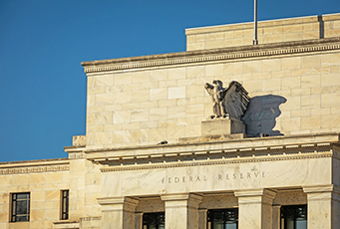‘Transitory’ inflation? What’s that? As consumers, we see higher prices on goods and services that we purchase every day. Is this inflation short-lived or are higher prices here to stay? And, what’s the Federal Reserve doing about it?
The Data's in the Details
November’s year-over-year CPI inflation rate was reported to be 6.8%, a 39-year high and an increase from October’s already surprisingly high reading of 6.2%. In fact, the annualized rate for the first eleven months of 2021 is now 7.3%.
This inflation rate far surpasses the Federal Reserve’s target of achieving an average inflation rate of 2% per year. Despite this data, throughout much of the year Fed Chair Jerome Powell has dismissed inflation concerns because he believed higher prices were ‘transitory.’ In other words, the Fed believed that the higher inflation rate would be short-lived and would revert to historical norms quickly.
However, the year-over-year monthly inflation rate has either held steady or increased in ten out of the year's first eleven months. This ever-increasing inflation rate has poured cold water on the Fed's ‘transitory’ narrative and caused a change in the central bank's messaging. Recently Powell announced that the Fed would no longer use the term 'transitory' to describe inflation, acknowledging that inflation is likely to be higher and more persistent than previously believed.
Consumers Fear Higher Inflation
One of the reasons the Fed has changed its tune on inflation is the increasing concern consumers are expressing at rising prices. A recent Wall Street Journal poll found that 56% of respondents in the survey said that inflation was causing financial strain, with 28% saying the pressures were significant. This aligns with the sentiment that 60% of those surveyed felt that the economy was headed in the wrong direction, despite a strong jobs market and rising stock prices.
Consumer sentiment regarding inflation is important because, in addition to the supply and demand of money and goods and services, inflation is also impacted by people's perception of how high they think prices may be in the future. If consumers anticipate inflation will increase, it could lead to a hoard of people making purchases now to avoid higher prices in the future. The resultant spike in demand can lead to shortages, creating a vicious cycle that pushes prices even higher.
Powell's Pivot
Fed Chair Jerome Powell's acknowledgment that inflation has been higher and more persistent than previously anticipated will have a meaningful impact on the Fed's future policy and the markets. In early November, the Fed announced that it would begin to 'taper,' i.e., reduce the amount of its bond purchases by $15 billion each month. While an expected first step towards normalization rates, the announced tapering may not have been enough to quell inflation fears.
To address the growing threat of inflation, many expect that the Fed will announce an accelerated pace for the taper next week to end its pandemic-era stimulus program more quickly. Analysts also expect the Fed to open the door to more aggressive interest rate hikes in 2022 to regain control. Reduced bond purchases and higher interest rates put downward pressure on inflation. As it makes borrowing more expensive, it also leads to a decrease in economic activity and spending that drives inflation.
Conclusion
As the Fed turns its eyes to combating inflation, the question remains whether it can successfully remove the monetary stimulus quickly enough to stave off rising inflation without rattling the markets.
In 2013, as the economy recovered from the Global Financial Crisis, markets reacted very negatively to the Federal Reserve's initial attempt to remove its Quantitative Easing stimulus (the so-called ‘taper tantrum’). Markets experienced similar volatility in 2018 when the Fed attempted to normalize interest rates to return them to historical norms. After several small rate increases, the policy was suspended to support an unstable market.
Despite a strong jobs market and increased productivity, the threat of inflation looms over the economy.
What should you do? With so much uncertainty around inflation and the Fed's future actions, it is important to maintain a diversified portfolio with portions that will benefit under divergent outcomes.
Schedule a Consultation
We have helped our clients answer these questions and more. If you want a clear understanding of your financial future, and need help making changes to reach your goals, schedule a consultation and we can get started.
Please remember that past performance may not be indicative of future results. Prior to implementing any investment strategy referenced in this article, either directly or indirectly, please discuss with your investment advisor to determine its applicability. Any corresponding discussion with a Bedel Financial Consulting, Inc. associate pertaining to this article does not serve as personalized investment advice and should not be considered as such.
Recommended Articles
Fixed Income Portfolios: Go Long or Checkdown?
Over the last several months, the Bedel Financial team...





